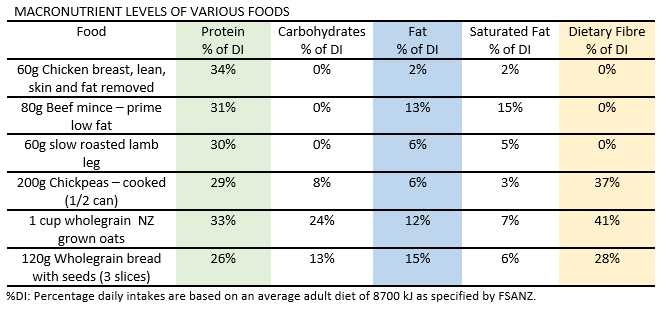I recently had cause to visit a gastroenterologist (GI). Despite all the fibre and whole plant foods I eat, I still have mysterious issues with digestion. I have read enough to know this is unusual on a Whole Food Plant Based (WFPB) diet, so I am in the process of finding out what is happening, as it isn’t quite right.
I explained my situation to the GI. I said that my digestion worked significantly better now, compared to when I was eating meat, eggs and dairy. But I have read enough to know that it is important for my digestion to work well, to help avoid colorectal cancers.
He asked me to itemise what I eat in an ordinary day, and he agreed that my diet was good, and included a good amount of fibre. But then he went on to ask the classic question: Where do you get your protein? I really don’t understand the fixation with protein in the diet! I found myself repeating well worn answers, telling him about the “meat/dairy substitutes” I eat (beans, tofu, nuts/seeds), which satisfied him.
But it got me pondering. How would I explain to him that my diet has plenty of protein in it? The reality is food contains more than one macronutrient – they are always a combination. For instance, meat isn’t just protein, and bread isn’t just carbohydrate.
Take a look at these foods for instance:[i]

You can see that these foods are all good sources of protein, providing about the same for each serving. There are two points I want to make:
- The first three are all animal foods. The fat they provide is saturated fat (which is less healthy), and they provide zero dietary fibre.
- The last three are all plant foods. Much of their fat is the healthy unsaturated kind, and they provide an abundance of healthy dietary fibre.
Takeout:
Protein ALWAYS comes bundled with either fat or carbohydrate, or both.
Protein ALSO comes in large amounts in foods that we call “Carbs”.
Back to my conversation with the GI, I decided that the best way to convey that my WFPB diet contained enough protein, was simply to analyse what I eat. I know from multiple sources, that a WFPB diet provides more than enough protein for optimal health. But nothing makes a point stronger than proof, right? I made a decision that, next time I visited, I would explain where my protein comes from. Here is what I worked out:
Nutrients in a common day of eating for me:[i]

You can see very clearly that I get more than enough protein in my diet. I do eat a large amount of linseeds, both for their fibre and their anti-inflammatory properties (that probably needs to be a different blog post – although you might be interested in looking at this book if your ears have pricked up). The extra linseeds pump up my protein and fat levels. But even without them my levels of protein are still good! I purposely chose a day that didn’t include many of the standard “protein” foods like tofu or beans, so I feel more than comfortable.
I showed this table to my GI today, and he agreed that the nutrient levels of my diet are indeed adequate. But the best lesson has been for myself. I now have proof that my diet provides all that I need. It is a great feeling! And check out that fibre score 🙂
I suggest having a go yourself. Document what you are eating each day, then go on to the food composition website (link below) and find out for yourself!
Hint: I started by just looking at the actual levels of each nutrient in kJ and g. But the most useful info ended up being the %DI, as this allows you to judge how you are doing compared to the prescribed healthy “norm”.
[i] Data from https://www.foodcomposition.co.nz/search/food – accessed 5 May 2022
Main photo by Alex Motoc on Unsplash








Recent Comments